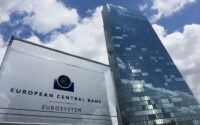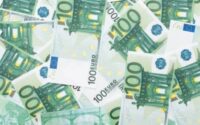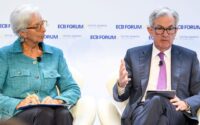The Fed’s battle to fight inflation could cause more pain than higher prices
But some economists are cautioning that would be a very bad idea, hurting the people that the battle on rising prices is meant to help.
“The people you’re drafting into the fight against inflation when you raise interest rates and slow the economy are the most vulnerable,” said Robert Reich, the former US Labor Secretary under President Bill Clinton and a professor of public policy at the University of California, Berkeley. “The purpose of raising interest rates is to take the air out of the sails of the economy. If it works, you are by definition are going to have fewer jobs. Even small increases in interest rates, if they have the desired effect, will cause job losses and wage losses.”
Rate hike history a reason for concern
Although the consumer price index in March of that year was 3.8% — about half of what it is today — it had more than doubled over the previous 12 months, raising concerns about inflation.
The Fed, which had raised rates by one quarter point five times since the previous June, decided to get even tougher with a half-point hike in May 2000.
The economy did not take it well.
Private sector employers, who had added jobs every month in the previous five years, suddenly cut jobs in May 2000.
They returned to adding jobs for most of the rest of the year but then started trimming jobs most months starting in early 2001 — losses that continued for three years. Many experts blamed the job losses on the bursting of the dot-com bubble, which occurred in the summer of 2000. But many job cuts came in non-tech sectors such as construction, retail, automaking and airlines.
The economy fell into recession in early 2001, and the Fed was soon cutting rates a half-point at a time to try to pull the economy out of recession. Even if the recession was “mild” by economic standards, the jobless recovery that followed was no one’s idea of a strong economy.
That’s what has many critics of war on inflation so worried.
“Every time the Fed has tried to slow the economy by bringing prices under control, it has overshot,” said Reich.
Fed powerless to fight much of inflation
A 40% rise in gasoline prices by itself has raised the overall consumer price index by 1.5 percentage points in the last year.
So 3.7 percentage points, or just less than half, of the 7.5% increase in CPI is due to the increased price of those three items alone — gasoline, new vehicles and used cars.
“Most of the inflation we’ve seen over the last 15 months has been about extreme distortions the pandemic has put on the economy,” said Josh Bivens, director of research at the Economic Policy Institute, a liberal think tank.
Rate hikes could hit your home value
Higher mortgage rates will serve to cool housing price increases, even as it continues to lift the cost of buying a home.
If those rates continue to climb, housing price increases are likely to slow, or even reverse. That would be good news for home buyers, and perhaps for renters, but bad news for homeowners. And that could slow consumer spending.
“Any time housing prices fall, because [homes are] such a big part of wealth, there’s going to be some cutback on consumption,” said Bivens.
How quickly can rates be raised safely?
When the pandemic hit, the Fed cut its fed funds rate by 1.5 percentage points to essentially zero. It has stayed there ever since.
Bivens doesn’t necessarily oppose the Fed starting to raise rates, but he would advocate doing it slowly with small quarter-point increases, and perhaps not at every meeting, as policymakers wait to see if the pandemic-inflated prices return to normal.
“Yanking down on aggregate demand level by raising rates would be a machine gun approach to something that needs a scalpel,” he said.
Even some economists who would raise rates faster than Bivens agree there will be economic pain caused by doing so.
“The mechanism by which monetary policy addresses inflation is it slows down the economy. It’s a very, very painful path,” said Justin Wolfers, professor of public policy and economics at the University of Michigan. Still, he believes that the current rates are low enough, especially in comparison to the inflation rate, to make rate increases less risky than some past hikes.
But Wolfers says there is a risk that the economy will start to lose jobs, rather than just slow the pace of job increases, once the Fed starts to raise rates.
“What (Fed Chairman Jerome) Powell is hoping for is a so-called soft landing, creating a small number of jobs each month, and allowing the economy to go sideways and it catches its breath,” he said. “There’s a long history in the US and elsewhere of failing to achieve that soft lending.”
— CNN’s Matt Egan contributed to this report
[ad_2]
Source link


